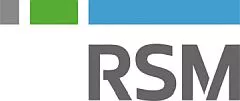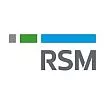- within Strategy topic(s)
Managing a modern organization's IT ecosystem is no easy feat. With uncertainty looming, budgets tightening, regulatory requirements increasing and digital transformation reshaping industries, IT leaders face mounting pressure to manage their technology assets more effectively.
One common challenge is visibility into hardware, software and cloud assets for keeping track of inventory, usage and performance. Effective management of the lifecycle of your IT assets—from procurement to disposal—with a strategic IT asset management (ITAM) solution can help you address common pain points, optimize IT spending and set your business up for long-term success.
Four signs you need an ITAM solution
Embarking on a new IT initiative can be daunting. These four factors motivate many organizations to invest the time and resources into better management of IT assets:
- Cost savings: Optimizing spending on software, infrastructure and platform services is a key strategy when cutting costs. Organizations can cut spending when they use best practices to optimize software licenses and asset use.
- Reliance on spreadsheets: Companies still often track their assets using spreadsheets, but there is a good chance your spreadsheets contain errors and sap teams of time and attention. Additionally, spreadsheets create data silos, making it difficult for all authorized users to access the same up-to-date information and make strategic planning decisions.
- Difficulty keeping up with the pace of change: IT assets are always on the move, and manual tracking can become overwhelming. Dealing with issues like theft, replacement and retirement of IT assets, and new shipments can create a chaotic environment that demands closer attention to detail. Given the workload most IT teams are juggling, systemic change is often needed.
- Shadow IT is a reality: Shadow IT refers to applications, licenses and other IT assets purchased and/or used without the knowledge of the IT team. Centralized ITAM software keeps IT in the loop and prevents overspending, risk, security gaps and noncompliance. Shadow IT is a reality for nearly all modern businesses; how you manage it will make a big difference in the level of control you have.
What is ITAM?
ITAM involves overseeing an organization's physical and digital IT assets, creating an environment for effective tracking, utilization, maintenance and retirement. It combines financial, inventory and contractual data to maximize the value of assets throughout their lifecycle.
Dig into more details and definitions in ServiceNow's helpful article What is IT asset management?
The International Standards Organization (ISO) family of standards for ITAM (ISO 19770), consists of five parts:
- ISO/IEC 19770-1 outlines best practices for ITAM within a company.
- ISO/IEC 19770-2 helps companies identify software on a given device.
- ISO/IEC 19770-3 details the entitlements associated with a piece of software and the method for measuring consumption.
- ISO/IEC 19770-4 allows for standardized reporting of resource use.
- ISO/IEC 19770-5 provides an overview of ISO ITAM standards and vocabulary.
The hidden costs of ineffective ITAM
Effectively managing IT assets requires a structured approach. Most IT leaders know that software and cloud subscriptions often go unused, and duplicate hardware or redundant software is a common problem for organizations. In addition, some of the downstream impacts of inadequate ITAM include limited visibility, compliance risks and operational inefficiencies.
ITAM as a strategic imperative
To tackle these challenges, leaders must shift from thinking about ITAM as a tactical, back-office function to a strategic discipline that delivers results. Some of the ways this approach can benefit your organization include:
Lifecycle management for increased visibility: Effective ITAM allows you to track the entire lifecycle of an asset from purchase to retirement, which can improve decision making across departments and prevent wasted resources. For example, by integrating data across hardware and software, you can proactively identify opportunities for streamlining your tech stack and workflows.
Cost savings through optimization: Pinpointing unused or underutilized hardware, software and software-as-a-service subscriptions is central to optimizing IT spend. Another way teams can save is by automating workflows, freeing up workers to focus on initiatives that further key business objectives. In any case, a strategic, holistic approach here can help maximize savings and efficiency.
Risk mitigation and compliance: Poor asset management exposes organizations to the risk of losing sensitive data or incurring unnecessary costs. Asset reconciliation helps your teams meet licensing agreements, and centralized tracking reduces cybersecurity vulnerabilities caused by shadow IT and aging systems.
Achieving ITAM success
Implementing an effective ITAM system requires careful planning and alignment across people, process and technology. Prerequisites include:
Building the right team
A human-centred approach is a crucial element of an effective ITAM solution. IT needs to collaborate with teams across the organization to identify gaps and opportunities, all the while centring broader business goals. From initial buy-in to training and process implementation, you'll want support from experienced advisors to stimulate ongoing success.
Establishing repeatable processes
ITAM processes should be transparent, measurable and scalable. Automation is a critical component for reducing the potential for human error. For example, automated discovery tools can track hardware and software usage in real time; regular reconciliations can confirm that assets comply with licensing terms and prevent data silos or inconsistencies.
Leveraging scalable technology
A modern ITAM solution should integrate seamlessly with existing platforms so they can scale as the organization grows. For example, ServiceNow's ITAM products deliver a unified architecture that ties hardware, software and cloud assets together. Automation, AI-driven insights and centralized dashboards allow stakeholders to optimize assets and create seamless compliance.
Real-world ITAM success stories
Cox Automotive saved $150,000 in its first year after a ServiceNow implementation. Explore the full case study.
Keybank automated 33% of service requests and 55% of triage and incident assignments, leading to better, data-enabled decision making. Explore the full case study.
Actionable insights for IT leaders
For IT leaders, a proactive approach to ITAM isn't just about deploying tools—it's about framing ITAM within your broader strategy. Here are a few steps to get started:
- Perform a 360-degree asset assessment: Evaluate your current ITAM setup to uncover inefficiencies and compliance risks. A comprehensive inventory of your hardware, software and cloud assets will expose opportunities for improvement.
- Invest in automation: Manual tracking is no longer viable for overburdened IT teams in today's fast-moving digital landscape. Automated workflows and analytics are essential for improving efficiency and reducing errors.
- Think beyond cost savings: While cost reduction is a primary driver, ITAM also offers opportunities to enhance operational resilience, manage risks and align IT investments with business goals.
- Work with the right provider: Find a provider with specific experience in middle market organizations who can develop a solution that is tailored to your unique needs.
Solving your ITAM challenges
To truly transform your ITAM capabilities, you need more than tools. You need a solution that integrates seamlessly into your operations while addressing your organization's unique needs.
The content of this article is intended to provide a general guide to the subject matter. Specialist advice should be sought about your specific circumstances.


